ChatGPT:
Lyme Regis is a picturesque seaside town located on the Dorset coast in the southwest of England. It’s renowned for its stunning location on the Jurassic Coast, a UNESCO World Heritage site known for its geological significance and abundant fossils dating back millions of years. The town is often referred to as the “Pearl of Dorset” because of its natural beauty and charm.

Lyme Regis has a rich and fascinating history that spans centuries, shaped by its geographical location, natural resources, and the people who lived there.
Origin and Early History
- Early Settlement: The area around Lyme Regis has been inhabited since prehistoric times. The town itself likely began as a small fishing village during the Saxon period. The name “Lyme” is derived from the old English word for the elm tree, which was once abundant in the area. “Regis,” meaning “of the king,” was added after the town was granted a royal charter in 1284 by King Edward I.
- Royal Charter and Medieval Growth: The royal charter marked a significant moment in Lyme Regis’s history, giving it the status of a borough and the right to hold markets and fairs. This boosted the local economy and led to the town’s growth as a small but important port. During the medieval period, Lyme Regis became known for shipbuilding and trade, particularly in wool, which was a key commodity in the English economy.
16th to 18th Century
- Economic and Maritime Development: By the 16th century, Lyme Regis had established itself as a significant maritime hub. The town’s shipbuilders were renowned for their skills, and Lyme Regis ships were involved in trade and exploration. However, the town also faced challenges, including repeated attacks from French forces during the Anglo-French wars and the ever-present threat of coastal erosion.
- The Cobb: The construction and maintenance of The Cobb, a protective harbor wall, were crucial for Lyme Regis. Originally made of wood, The Cobb was later rebuilt in stone, and its curved shape has become one of the most iconic features of the town. The Cobb provided a safe harbor for ships and played a vital role in the town’s prosperity.
18th to 19th Century
- Tourism and Cultural Significance: In the late 18th and early 19th centuries, Lyme Regis began to attract visitors seeking the health benefits of sea bathing and the natural beauty of the area. The town became a fashionable resort, attracting figures like Jane Austen, who set part of her novel Persuasion in Lyme Regis.
- Mary Anning and Paleontology: One of the most famous residents of Lyme Regis was Mary Anning (1799–1847), a pioneering fossil hunter and paleontologist. Her discoveries of significant fossils, including the first complete Ichthyosaurus and Plesiosaurus skeletons, contributed immensely to the emerging field of geology. Anning’s work drew scientists and fossil enthusiasts to the town, further boosting its reputation.
20th Century to Present
- Modern Development: Throughout the 20th century, Lyme Regis continued to develop as a popular tourist destination. Efforts were made to preserve the town’s historic charm while accommodating modern needs. The town has seen various conservation projects, particularly to stabilize the cliffs and protect the coastline from erosion, ensuring that its unique landscape remains intact.
- Cultural Renaissance: Today, Lyme Regis is known for its vibrant arts scene, with numerous festivals, art galleries, and cultural events. The town has embraced its heritage, with museums and guided tours celebrating its history, geology, and the legacy of Mary Anning.
- UNESCO World Heritage Site: The designation of the Jurassic Coast as a UNESCO World Heritage Site in 2001 further cemented Lyme Regis’s status as an important location for natural history. The town continues to be a destination for fossil hunters, geologists, and tourists drawn by its stunning scenery and historical significance.
In summary, Lyme Regis has evolved from a small fishing village into a historic port, a center of paleontological discovery, and now a beloved tourist destination, all while maintaining its distinctive character and connection to the natural world.
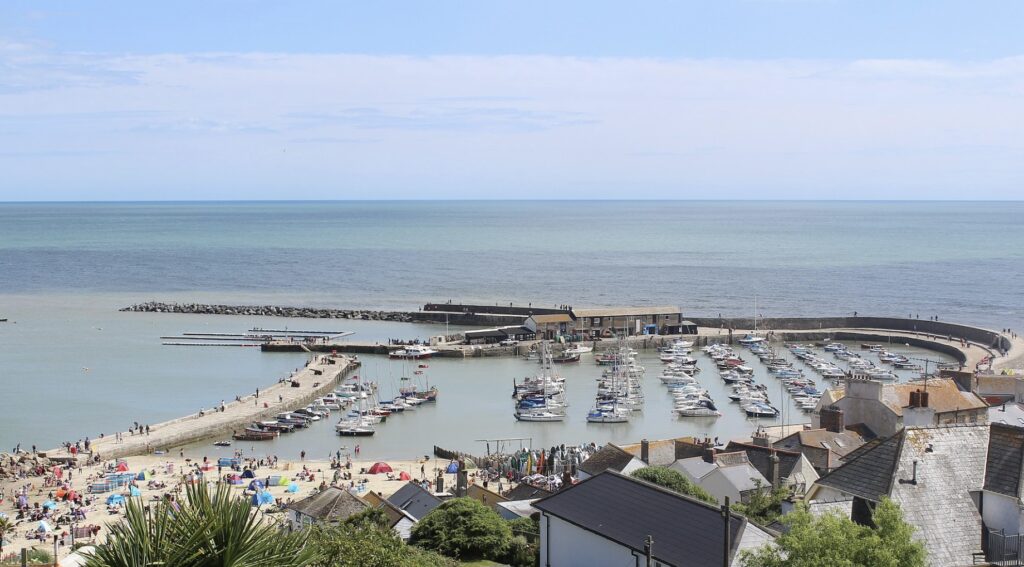
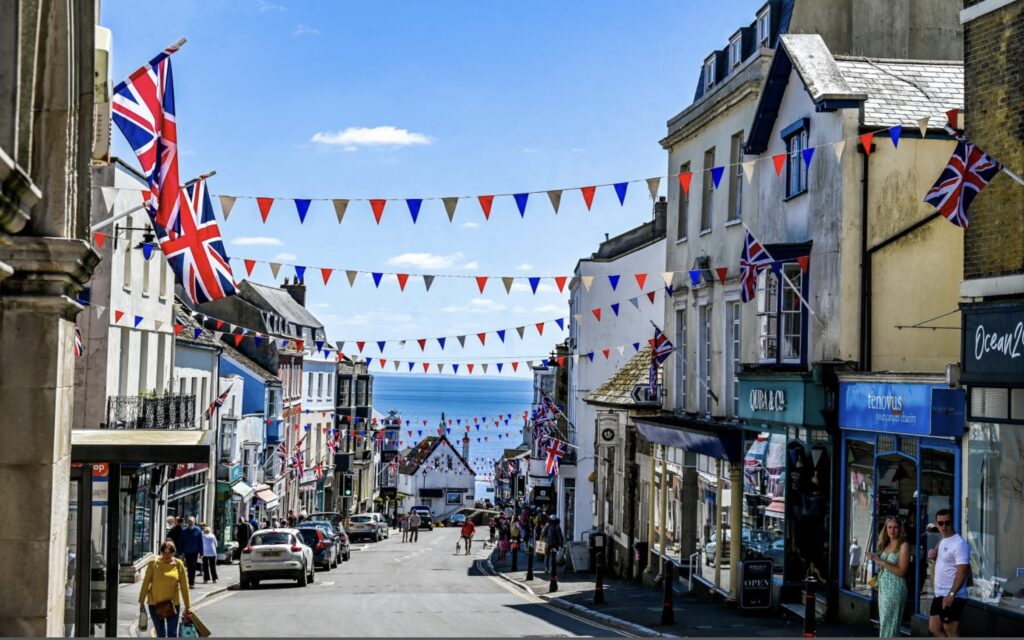
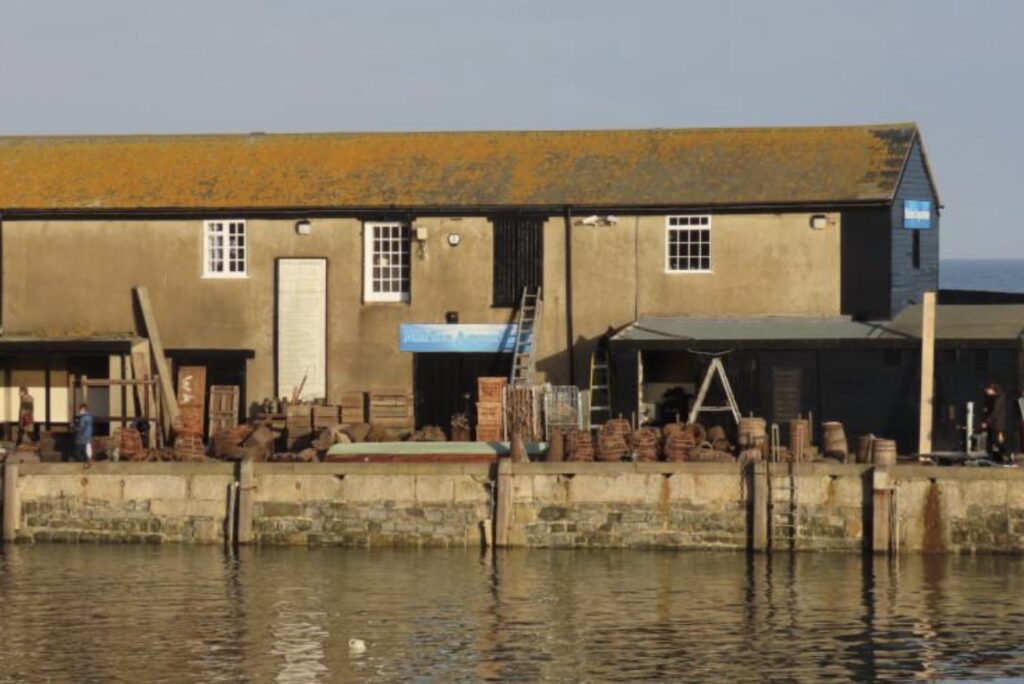
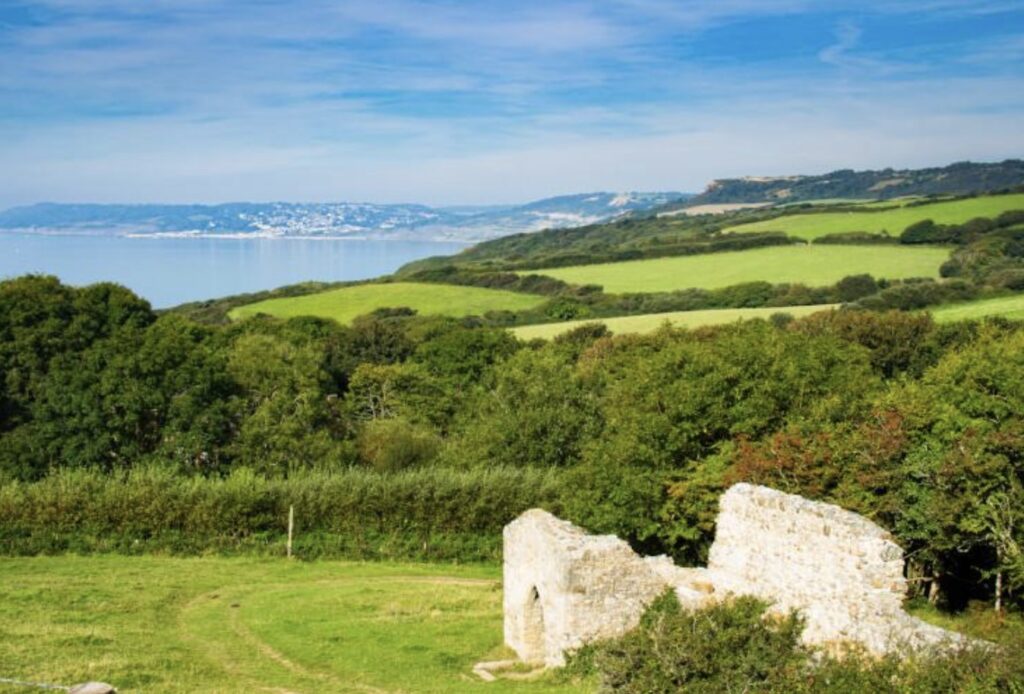
Lyme Regis and its surrounding area are rich in historical monuments and tourist attractions, each with its own unique history and significance. Below is a list of some key sites along with their approximate dates:
Historical Monuments
- The Cobb
- Date: Originally constructed in the 13th century, with significant reconstructions in the 16th, 18th, and 19th centuries.
- Significance: The Cobb is Lyme Regis’s historic harbor wall, famous for its role in protecting the town and its appearance in literature and films. It has been a vital part of the town’s maritime history for centuries.
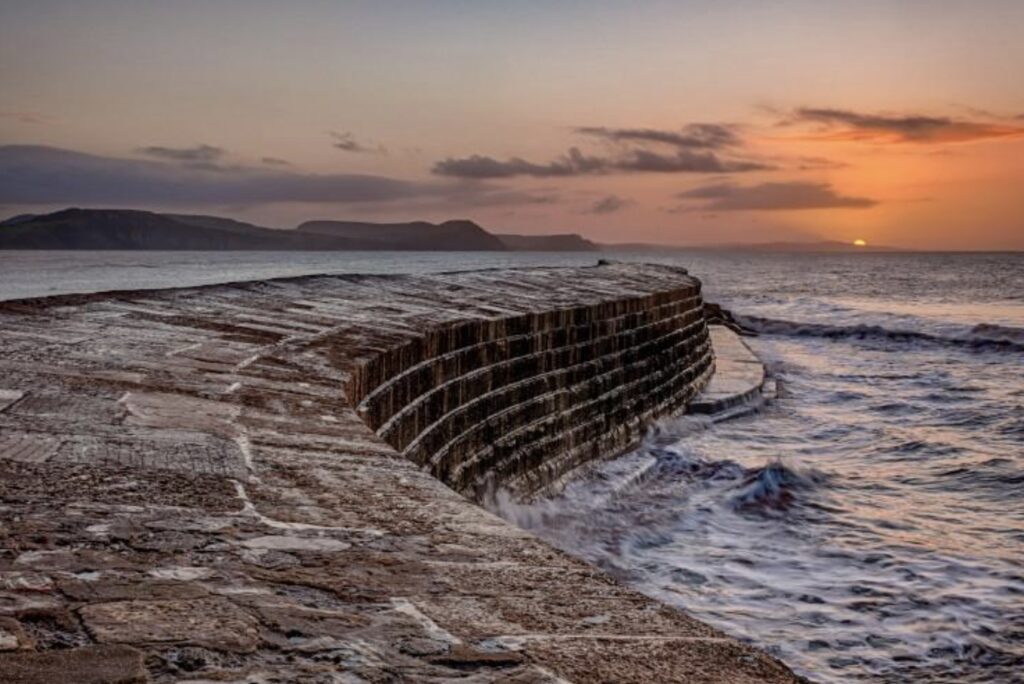
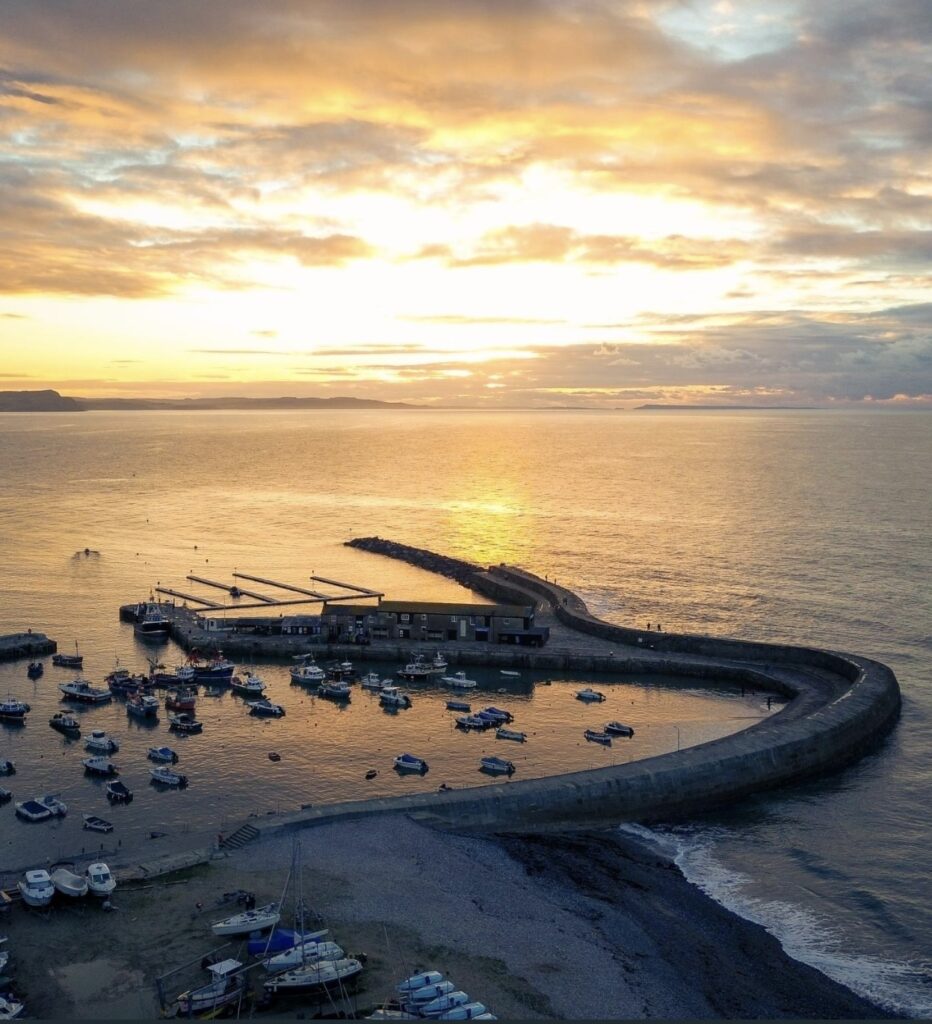
- St. Michael’s Church
- Date: The original church dates back to the 12th century, with major rebuilding in the 14th century.
- Significance: This medieval church is notable for its architecture and its connection to the town’s religious and social history. The churchyard contains the grave of Mary Anning.
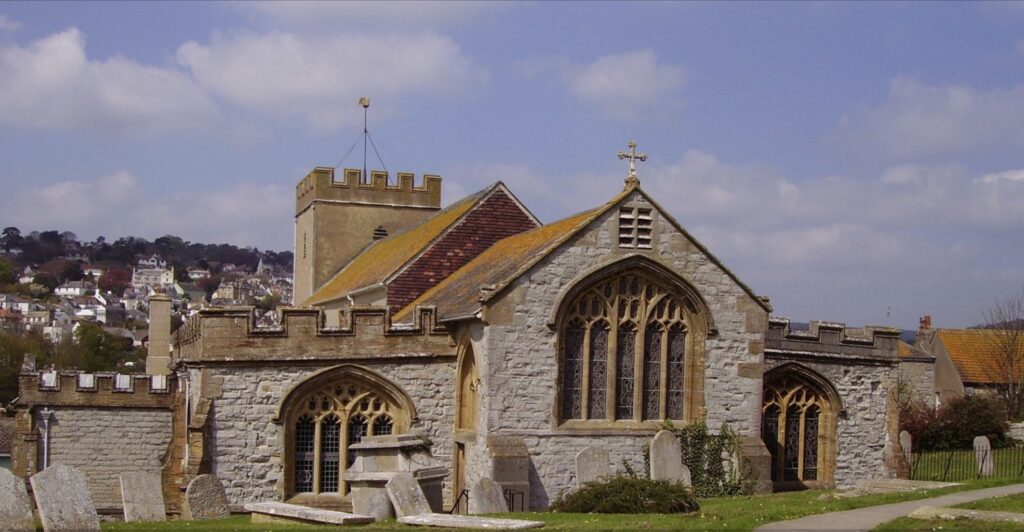
- Lyme Regis Guildhall
- Date: The building dates back to the early 16th century, with significant modifications in the 19th century.
- Significance: The Guildhall has served as the town’s center of civic administration for centuries and is one of Lyme Regis’s most iconic buildings.
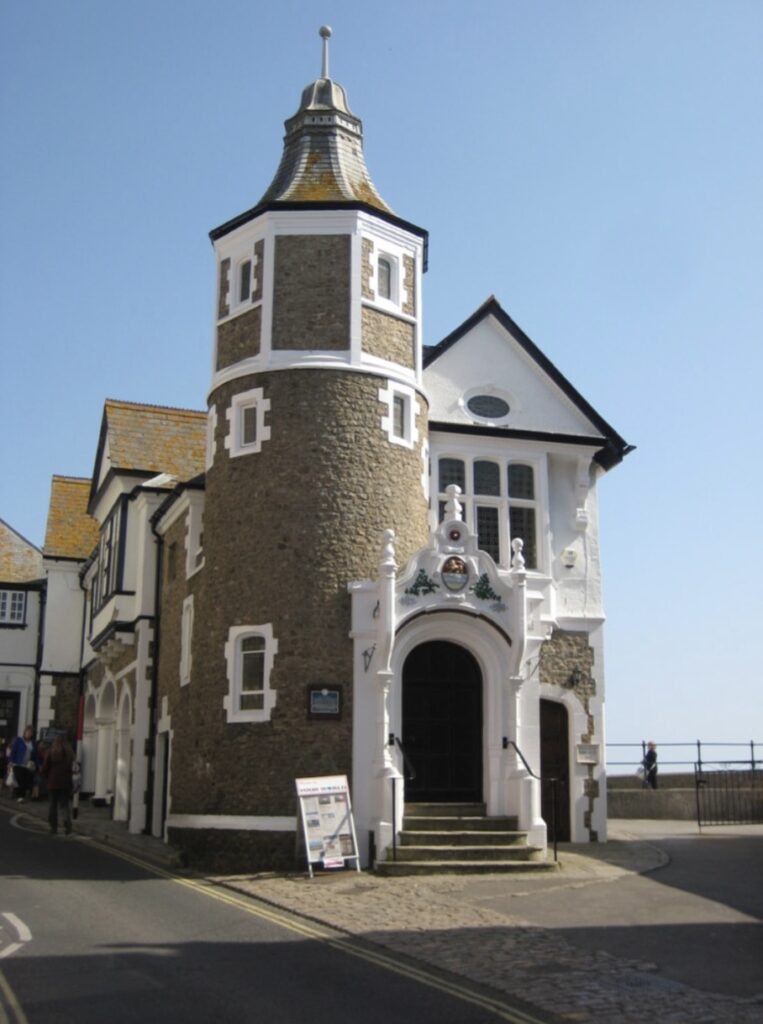
- Town Mill
- Date: The original mill on this site dates back to at least the 14th century, with the current building from the 18th century.
- Significance: The Town Mill is a working watermill that has been restored to grind flour. It’s a key part of the town’s industrial heritage and is now a popular visitor attraction.
- Marine Theatre
- Date: Opened in 1894 as a public hall, it became the Marine Theatre in the 1930s.
- Significance: The theatre is a historic venue in Lyme Regis, hosting a range of performances and events. It is also known for its scenic location with views over the sea.
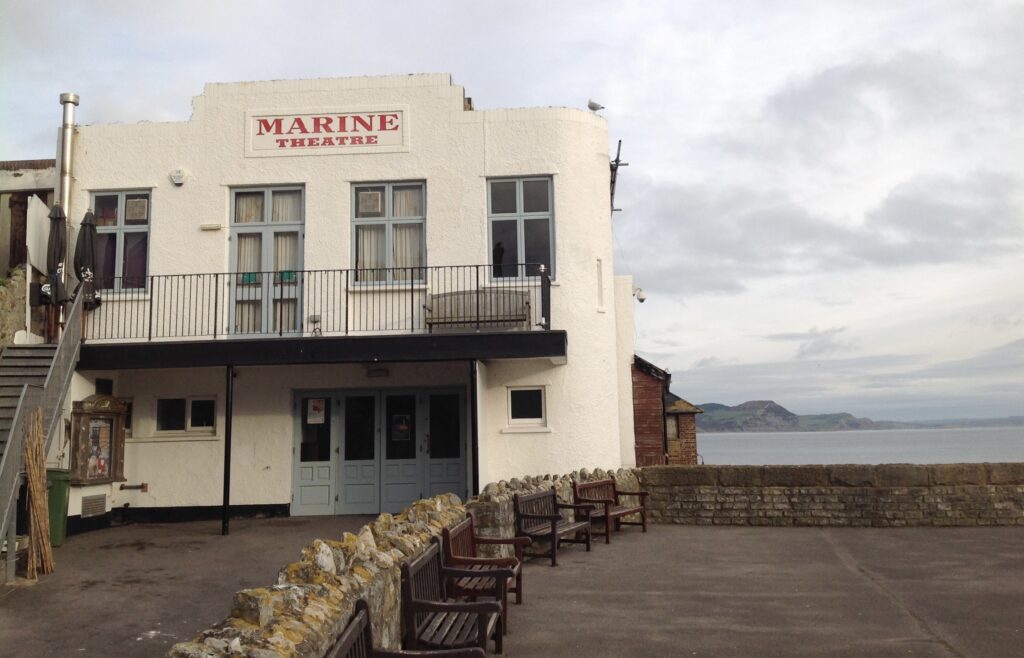
- Dinosaurland Fossil Museum
- Date: Established in 1989 in a former congregational church building dating from 1755.
- Significance: This museum houses an extensive collection of fossils, including many from the local area, and is a tribute to the fossil heritage of Lyme Regis.
Tourist Attractions
- Lyme Regis Museum
- Date: The current museum building was opened in 1902.
- Significance: Built on the site of Mary Anning’s former home, the museum focuses on the local geology, paleontology, and history, with exhibits dedicated to Mary Anning’s life and discoveries.
- Charmouth Heritage Coast Centre
- Date: Established in 1985.
- Significance: This educational center is located in nearby Charmouth and offers resources and guided walks focusing on the geology of the Jurassic Coast and fossil hunting.
- Monmouth Beach
- Date: The beach itself is natural and ancient, but it gained historical significance in 1685 when the Duke of Monmouth landed here during his rebellion against King James II.
- Significance: The beach is famous for its fossil-rich limestone ledges and its historical connection to the Monmouth Rebellion.
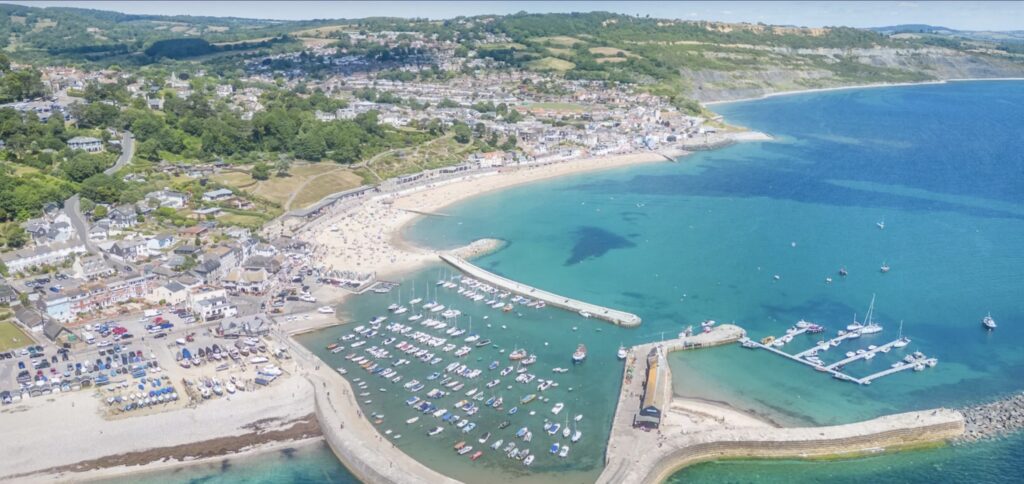

- The Undercliff
- Date: The landslip that created the Undercliff occurred in 1839.
- Significance: The Undercliff is a nationally important nature reserve created by a massive landslip. It’s known for its unique microclimate and rich biodiversity, making it a popular destination for walkers and nature enthusiasts.
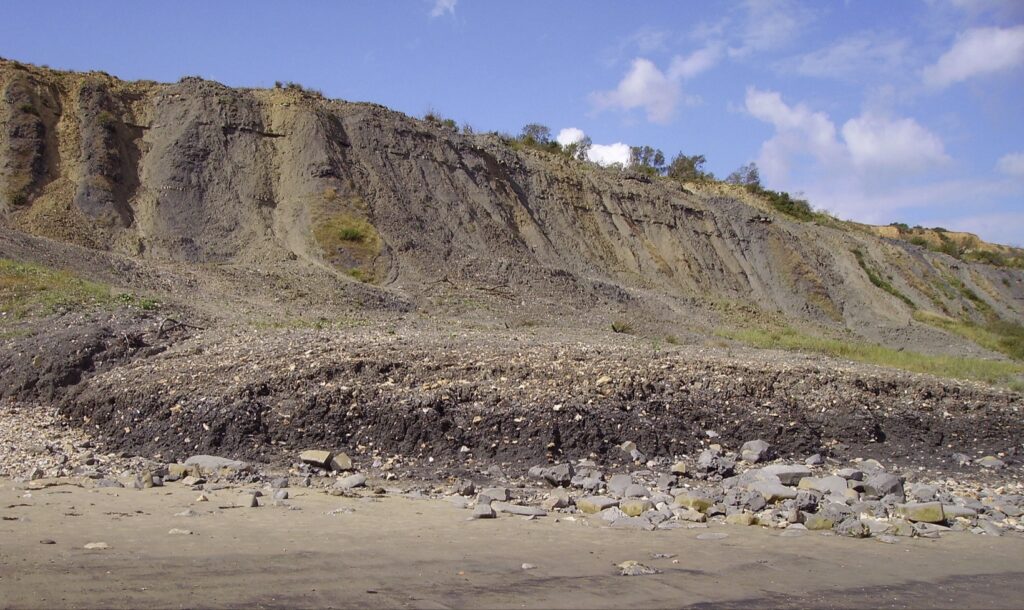
- Golden Cap
- Date: The geological formation dates back to the Cretaceous period, approximately 65-100 million years ago.
- Significance: Golden Cap is the highest point on the south coast of England and offers spectacular views of the Jurassic Coast. It’s a popular spot for hiking and outdoor activities.
- Fossil Walks
- Date: Fossil hunting has been a popular activity for centuries, with organized walks becoming more prominent in the 20th century.
- Significance: These guided walks are a major tourist attraction, offering visitors the chance to find fossils and learn about the geology of the area.
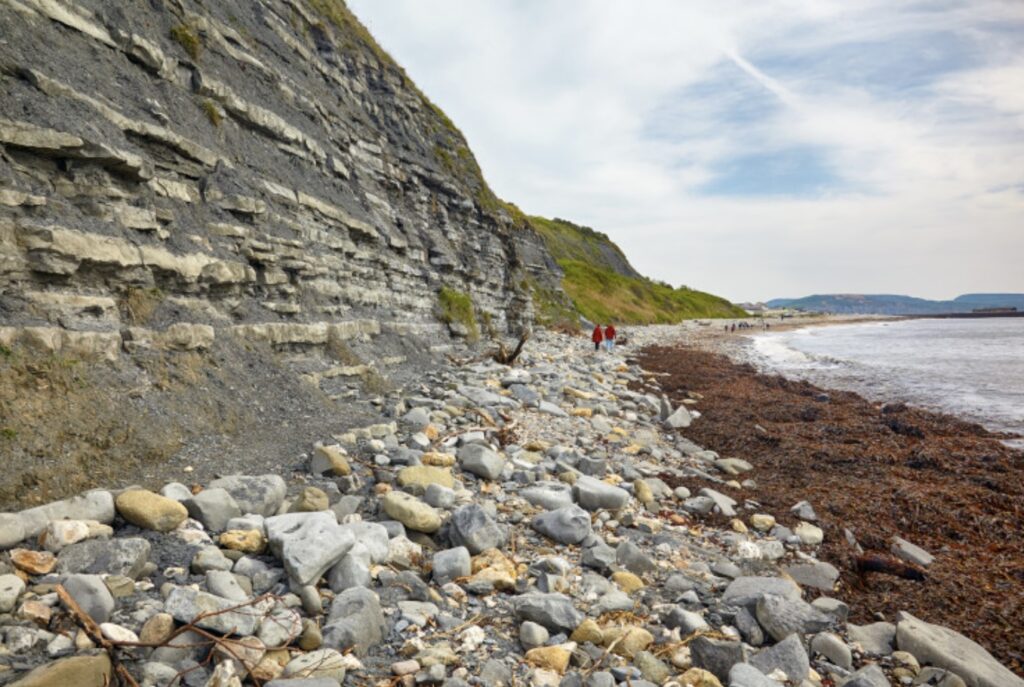
These monuments and attractions reflect Lyme Regis’s deep connection to its maritime, geological, and cultural history, making it a rich destination for visitors interested in both natural beauty and historical significance.
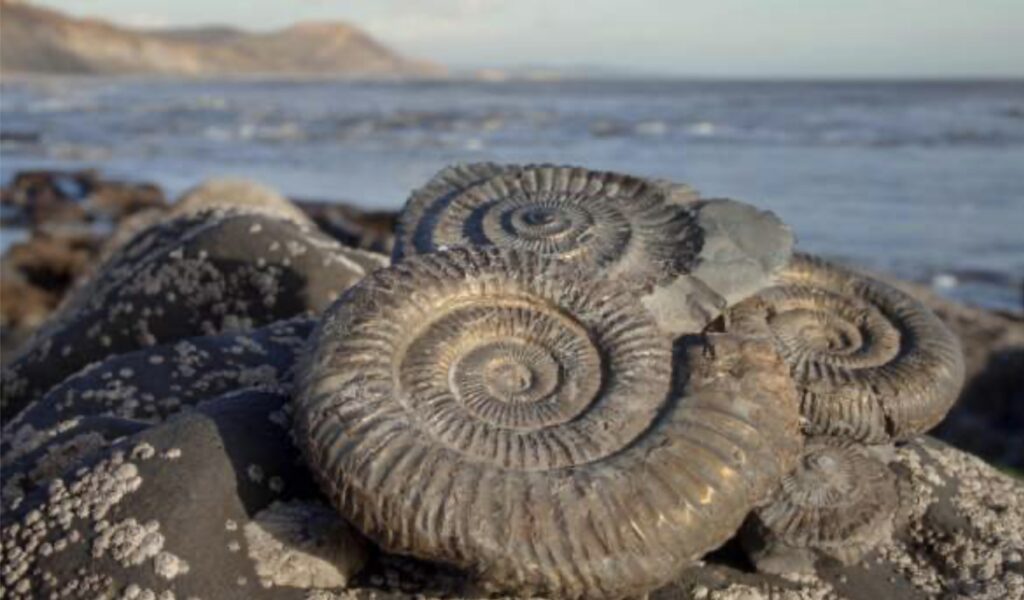
The discovery and recognition of the Jurassic Coast as a site of global geological significance is a story that spans centuries, involving the gradual accumulation of scientific knowledge and public awareness about the region’s unique features.
Geological Background
The Jurassic Coast stretches for 95 miles (153 kilometers) along the southern coast of England, from Exmouth in East Devon to Studland Bay in Dorset. This coastline is notable for its geological formations, which span the Triassic, Jurassic, and Cretaceous periods, representing about 185 million years of Earth’s history. The cliffs and rock formations in this area contain some of the most complete and accessible sequences of rock strata in the world, making it a natural geological archive.
Early Observations
- Antiquity: The significance of the fossils and rock formations along this stretch of coast was known to local inhabitants long before formal scientific study began. Fossils, particularly ammonites, were found by locals and sometimes collected as curiosities or used in local folklore.
- 16th and 17th Centuries: Early naturalists, including figures like the Reverend William Conybeare, began documenting the area’s fossils and geological features. These early studies laid the groundwork for understanding the broader significance of the region’s geology.
Mary Anning and the Birth of Paleontology
- Mary Anning: The true turning point in the recognition of the Jurassic Coast’s importance came with the work of Mary Anning, a pioneering fossil hunter born in Lyme Regis in 1799. Anning, often working with her brother, made some of the most significant fossil discoveries in the region, including the first complete Ichthyosaurus skeleton in 1811, and the first Plesiosaurus skeleton in 1823. Her discoveries were groundbreaking and provided crucial evidence for the emerging science of paleontology.
- Scientific Impact: Anning’s finds attracted the attention of leading scientists of the time, including geologists like Henry De la Beche and William Buckland. These scientists used her discoveries to argue for the then-radical ideas about the age of the Earth and the existence of extinct species. Anning’s work played a crucial role in the development of paleontology as a scientific discipline.
19th to 20th Century Developments
- Continued Research: Throughout the 19th and 20th centuries, geologists and paleontologists continued to study the Jurassic Coast. The cliffs along this coastline were recognized as a continuous and accessible record of Earth’s history, providing insights into past environments, climate change, and the evolution of life.
- Public Awareness: By the 20th century, the significance of the Jurassic Coast was widely recognized, not just within the scientific community, but also among the general public. Fossil hunting became a popular activity, and museums and educational centers were established to showcase the area’s geological heritage.
UNESCO World Heritage Designation
- UNESCO World Heritage Site (2001): The global significance of the Jurassic Coast was formally recognized in December 2001, when it was designated as a UNESCO World Heritage Site. The designation highlighted the coastline’s “Outstanding Universal Value” as a natural site, emphasizing its continuous rock sequence that spans the Mesozoic Era (approximately 250 to 65 million years ago) and its unparalleled fossil record.
- Conservation and Tourism: Since its designation, efforts have been made to conserve the natural and geological heritage of the Jurassic Coast. The area has become a major tourist destination, attracting visitors from around the world who come to explore its unique landscapes, hunt for fossils, and learn about Earth’s history.
Modern Significance
Today, the Jurassic Coast is celebrated not only for its scientific importance but also for its beauty and educational value. It serves as an outdoor classroom for geologists, paleontologists, and students, while also providing a stunning backdrop for outdoor activities and tourism. The area continues to yield new fossil discoveries, contributing to our understanding of ancient life and environments.

Here’s a one-day itinerary for exploring Lyme Regis, with a focus on its historic sites, natural beauty, and local food specialties:
Morning
9:00 AM – Breakfast at The Town Mill Bakery
- What to Expect: Start your day with a delicious breakfast at The Town Mill Bakery. Enjoy freshly baked pastries, sourdough bread, and a cup of locally roasted coffee in a cozy setting.
- Specialty: Try the local Dorset apple cake or a savory breakfast roll made with local ingredients.
10:00 AM – Explore Lyme Regis Museum
- What to Expect: Head to the Lyme Regis Museum, located on the site of Mary Anning’s former home. The museum offers fascinating exhibits on the town’s history, geology, and Mary Anning’s groundbreaking fossil discoveries.
- Time Spent: 1 hour.
11:00 AM – Fossil Hunting on Monmouth Beach
- What to Expect: Take a short walk to Monmouth Beach, known for its fossil-rich ledges. Join a guided fossil hunting tour or explore on your own to find ammonites and other ancient treasures.
- Time Spent: 1.5 hours.
Lunch
12:30 PM – Lunch at HIX Oyster & Fish House
- What to Expect: Enjoy a seafood lunch at HIX Oyster & Fish House, overlooking the harbor and The Cobb. The restaurant focuses on locally sourced seafood, offering stunning views along with your meal.
- Specialty: Try the Lyme Bay mussels, local oysters, or the catch of the day paired with a glass of English wine or local cider.
Afternoon
2:00 PM – Walk The Cobb
- What to Expect: After lunch, take a leisurely stroll along The Cobb, the iconic harbor wall that has been part of Lyme Regis for centuries. Enjoy panoramic views of the coastline and imagine the scenes from Jane Austen’s Persuasion and John Fowles’ The French Lieutenant’s Woman.
- Time Spent: 30 minutes.
2:30 PM – Visit the Marine Theatre
- What to Expect: If there’s a matinee performance or an interesting exhibition, consider spending some time at the Marine Theatre, a historic venue known for its charming atmosphere and sea views.
- Time Spent: 1 hour (optional based on schedule).
3:30 PM – Discover the Town Mill
- What to Expect: Explore the historic Town Mill, a working watermill with a vibrant arts community. Visit the mill itself, browse local art galleries, or enjoy a cup of tea at the café.
- Time Spent: 1 hour.
Late Afternoon
4:30 PM – Walk to the Undercliff
- What to Expect: If you enjoy nature walks, take a stroll to the Undercliff, a unique nature reserve created by a landslip. The walk is peaceful and offers the chance to see diverse plant life in a serene setting.
- Time Spent: 1 hour (shorter or longer depending on preference).
Evening
6:00 PM – Dinner at The Lyme Bay Café & Bar
- What to Expect: Finish your day with a relaxed dinner at The Lyme Bay Café & Bar. Enjoy views of the sea as you dine on locally inspired dishes.
- Specialty: Try the locally caught fish and chips, Lyme Bay crab salad, or a hearty bowl of seafood chowder.
7:30 PM – Sunset at Marine Parade
- What to Expect: End your day with a stroll along Marine Parade as the sun sets over the Jurassic Coast. The evening light creates a magical atmosphere, perfect for reflecting on your day in Lyme Regis.
This itinerary provides a well-rounded experience of Lyme Regis, combining its rich history, natural beauty, and delicious local cuisine.

